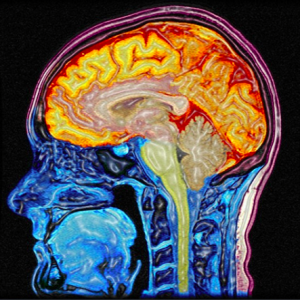Mark Lythgoe & Chloe Hutton / Wellcome Images Image Link
Research
By using magnetic resonance imaging (MRI), researchers are now able to accurately study and predict which infants, among those with older autistic siblings, will be diagnosed by the age of 2. According to an article on Science daily, in the past couple of years, researchers have correctly predicted 80 percent of these infants who would later meet criteria for autism at 24 months of age.
A study published in Nature, shows how early brain biomarkers can be very beneficial in identifying infants at the highest risk for autism prior to any symptoms. Joseph Piven, professor of Psychiatry at the University of North Carolina-Chapel Hill, explains how typically autism cannot be detected in infants until they ages 2-4, but for infants with autistic siblings, it can be determined at an earlier age.
People diagnosed with Autism Spectrum Disorder (ASD), experience social deficits and demonstrate very specific stereotypical behaviors. According to this study, it is estimated that one out of 68 children develop autism in the United States and that for infants with older siblings with autism, the risk may be as high as 20 out of every 100 births. Despite these high numbers, it remains a difficult task to detect behavioral symptoms prior to 24 months of age.
Piven, along with a couple of other researchers, conducted MRI scans of infants at six, 12, and 24 months of age. They discovered that increased growth rate of surface area in the first year of life was linked to increased growth rate of overall brain volume in the second year of life. This meant that brain overgrowth was tied to the emergence of autistic social deficits in the second year. The researchers then took the information they had and used a computer program that classified babies most likely to meet criteria for autism at 24 months of age, and developed an algorithm that they applied to a separate set of study participants.
The researchers found that there were brain differences at 6 and 12 months of age in infants with older siblings with autism and infants with older ASD siblings who did not meet criteria for autism at 24 months.
Plans for the Future
This research and test would be very beneficial to a family who already has a child with autism and has a second child who may or may not be affected. The ideal goal would be to intervene and provide as much assistance to the infant and family prior to the emergence of symptoms. By intervening at early stages and when the brain is most susceptible, researchers hope to improve the outcomes of treatment.
In the nature study, Piven describes how Parkinson’s and Autism are similar in that when the person is diagnosed, they’ve already lost a substantial portion of the dopamine receptors in their brain, making treatment less effective.
One mother who has benefitted from this discovery and is extremely grateful is Rachel O’Connor. When interviewed by News12, she shared how early intervention “has brought out some language in [her] daughter,” and how her daughter “can now say what she wants and she desires. She makes better eye contact.”



Leave a Reply